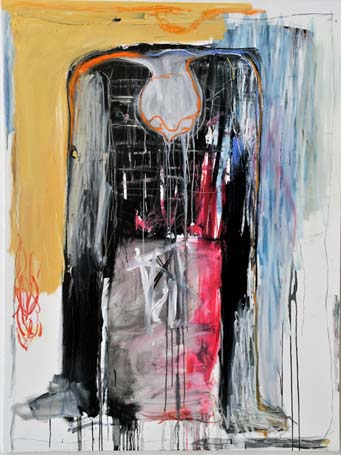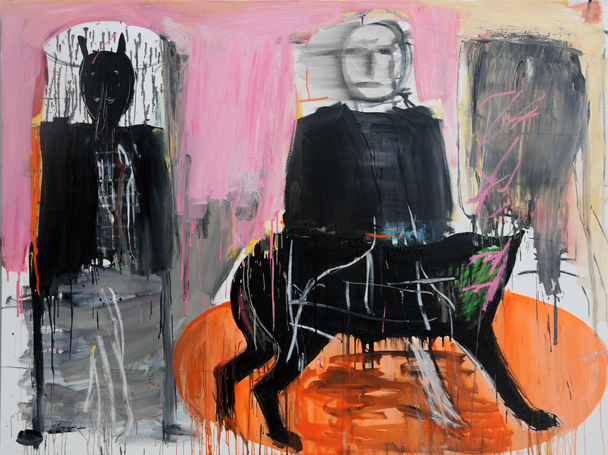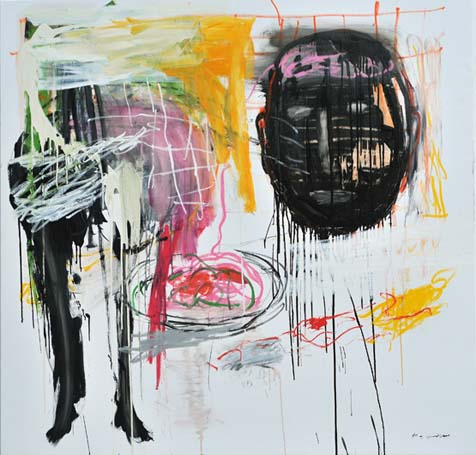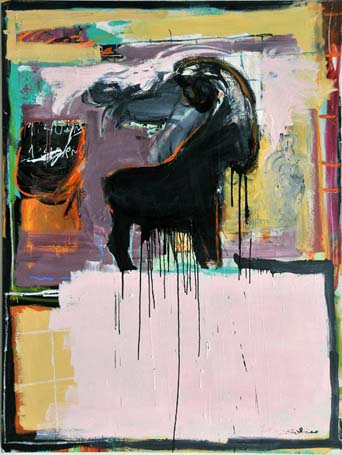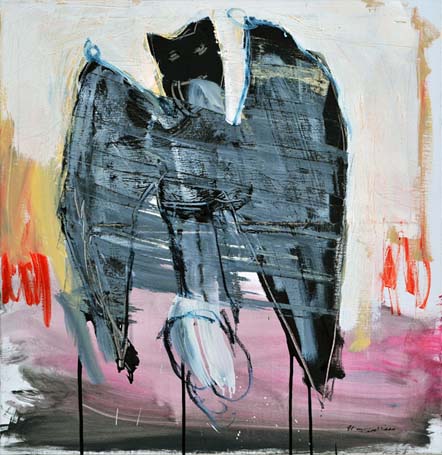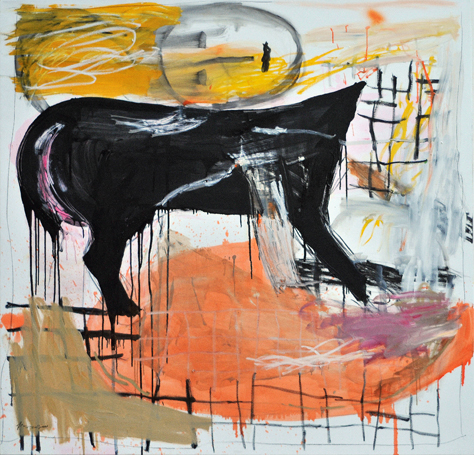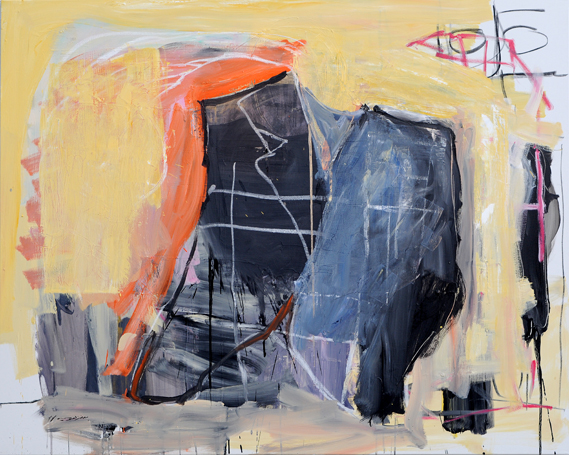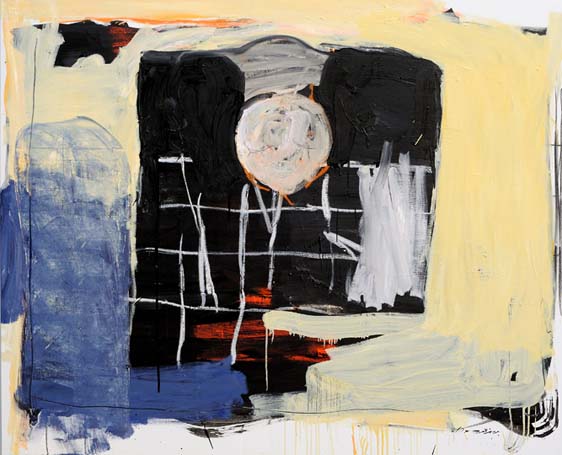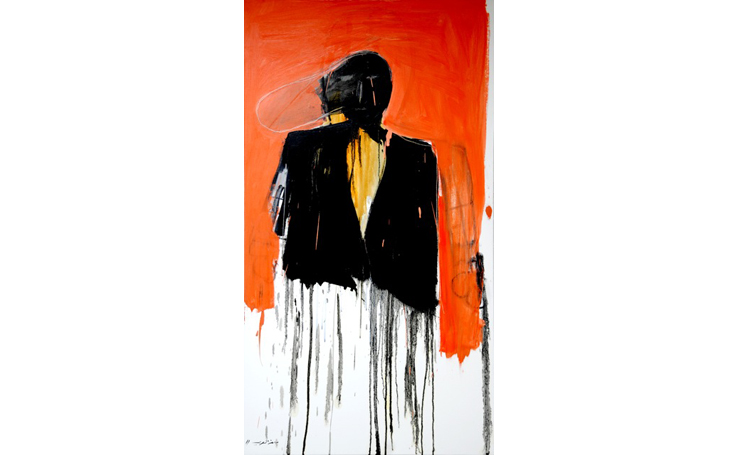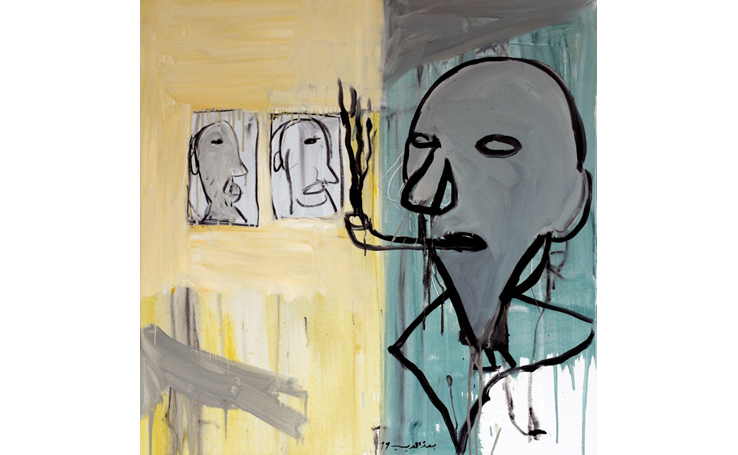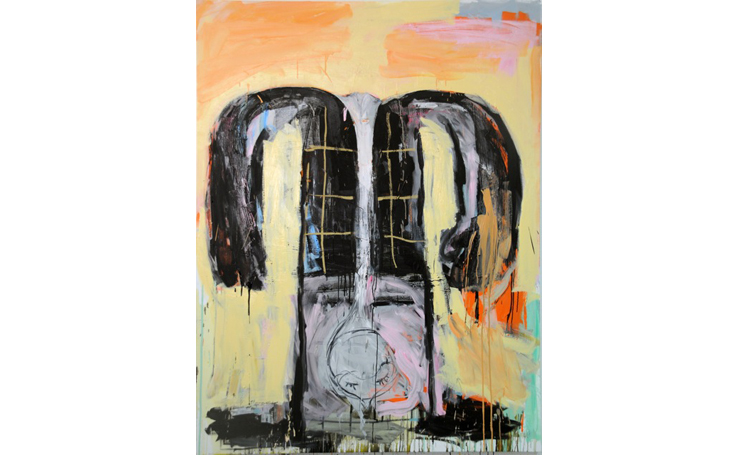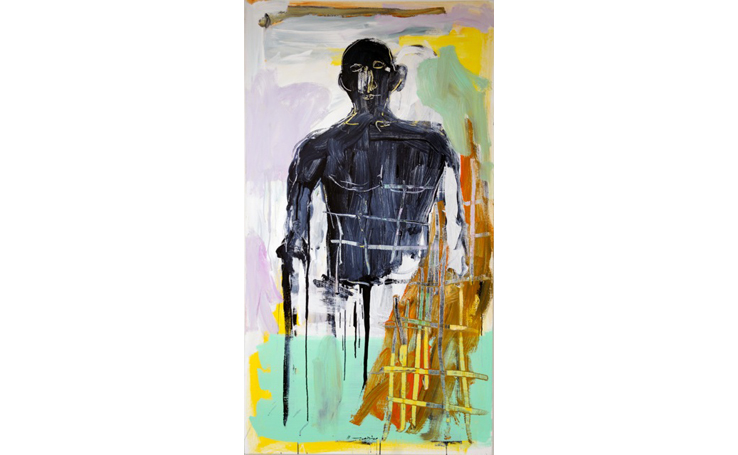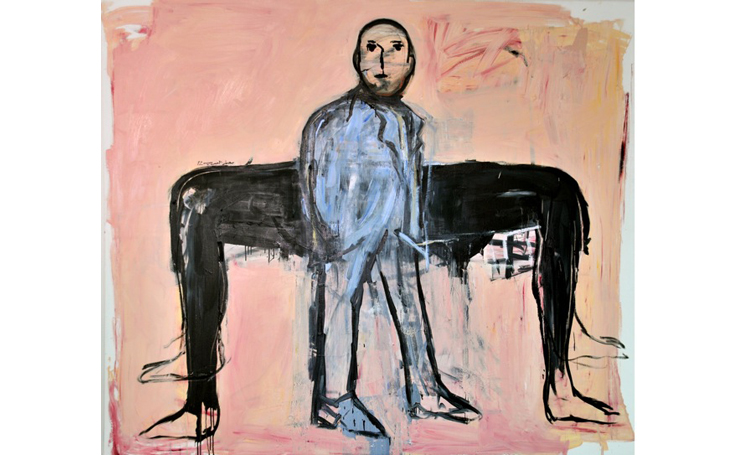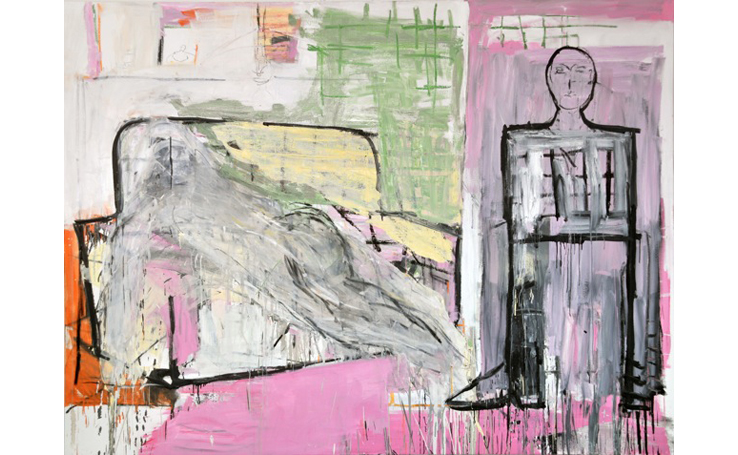
Inspired by his time in the United Kingdom, Jaffar Al Oraibi’s “When Ali Met William” series continues his introspective inquiry to explore the role of the individual in society. Al Oraibi evolves this notion further by investigating the concept of manhood and the role that men play in contemporary society. The artist relies on the human form, often his own, as a vehicle to question masculine drives, instincts and urges, and to make sense of pre-conceived notions and pre-set expectations. Towering male figures represented in thick black strokes of paint dominate the compositions, with strong forms, yet downcast heads, resulting in blended images of both strength and fragility. Al Oraibi uses bright, luminous colors throughout his pieces to add an element of lightness in contrast with his use of heavy black. He also relies on symbolic depictions to represent both masculine and feminine characteristics, as well as to draw attention to more basic, primal human drives.
Jaffar Al Oraibi’s work delves into the characteristics of humanity that are often unspoken and rarely exhibited. His work attempts to bring meaning and a sense of visual order to the chaotic underpinnings of humanity’s basic emotions. The artist finds people’s public persona to be contrived and deliberate. The innermost thoughts that reveal their instincts thus become fodder for his paintings.
He carries no specific blueprint with him when starting a piece. Rather, Al Oraibi starts by intentionally making bold gestures on canvas, propagating “mistakes” in the form of drips and dots and random lines. He then transforms the disorder into outlines of figures and symbolic representations of objects that carry deeply rooted meanings of gender construction. In his words, “I like to approach my painting in a dirty way, ugly and unrefined, then slowly begin to make the painting more comfortable for itself and for the viewer.”
Interior as Exterior
Jaffar Al Oraibi’s latest series introduces notions of the female form and female identity, delving into an exploration of the self and the other and a new take on the 2011 body of work which saw him exploring masculine identity. Moreover, these new compositions examine the hidden agendas that are at play between men and women. They offer the viewer no explanations but instead offer up a series of questions to be considered by the audience.
Jaffar Al Oraibi was born in 1976 in Bahrain and is a member of the Bahrain Arts Society. He graduated with a Bachelor of Arts in Education from the University of Bahrain in 1999. Al Oraibi was a resident artist at the Delfina Foundation in London in 2010 and at La Cité Internationale des Arts in Paris in 2006.












